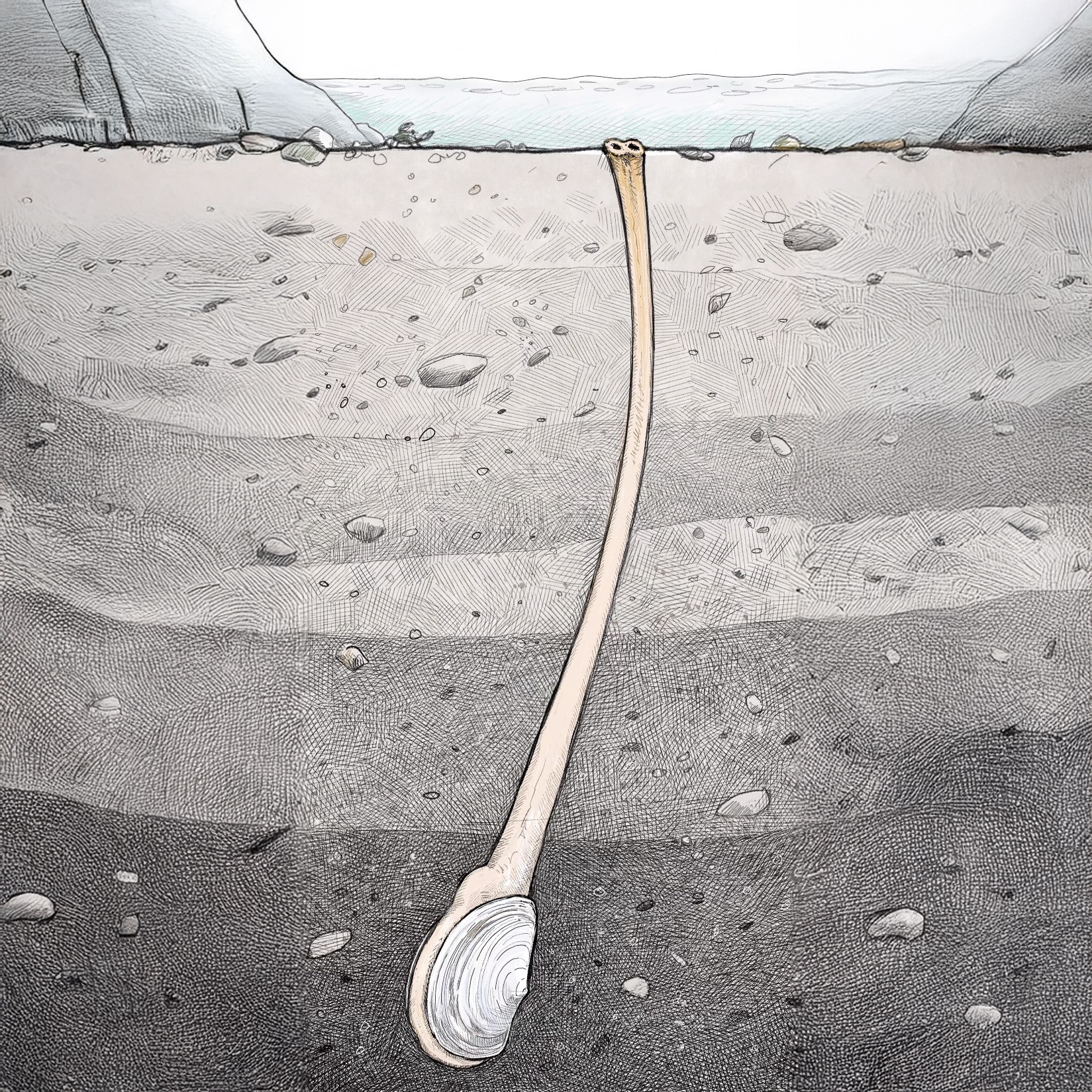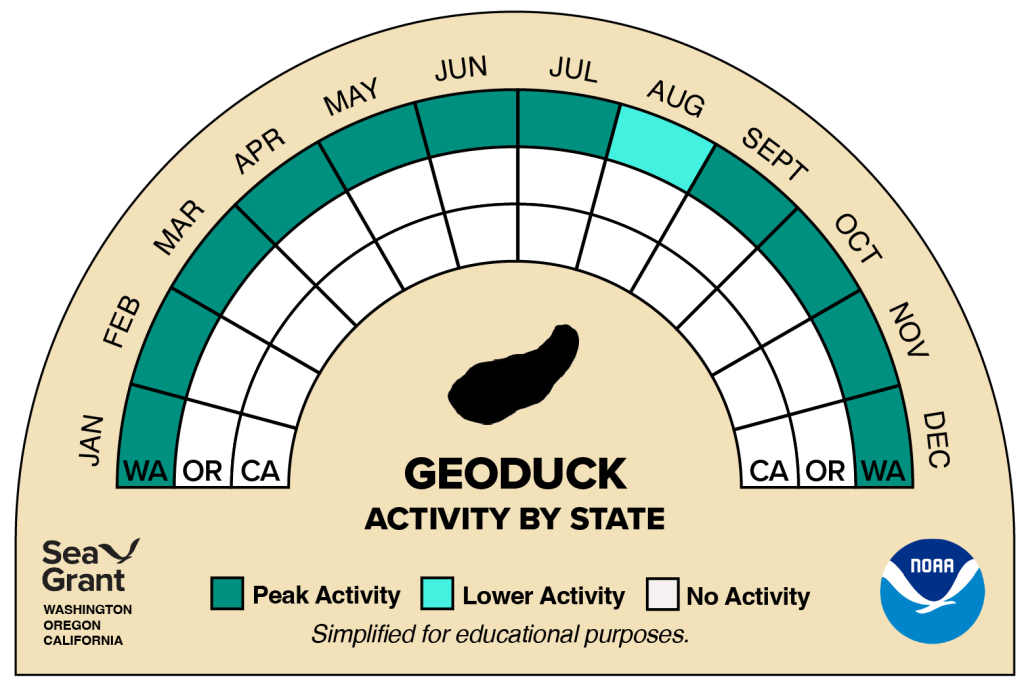Geoduck

Geoduck clam (Panopea generosa), also known as king or elephant clam, is the largest burrowing clam in the world. The clams range from northern Mexico to Alaska. A clam typically digs down three feet in sand, silt and gravel habitat, using the part of its body that looks like a small, hard foot. Geoducks reach an average of two pounds including their shells. This large and deep-dwelling clam is long-lived and slow-growing, often living more than 100 years. Geoducks feed by extending their necks out from their burrows and filtering microscopic algae from the water. Geoduck predators include sea stars, spiny dogfish and sea otters.
Overall availability
Geoduck is commercially farmed and fished in Washington and can be purchased year-round live or frozen. Geoducks have been harvested by the Coast Salish peoples for millennia and are now also farmed commercially.

Management
Geoduck clams are farmed using planted bottom culture and fished via commercial diving. Geoduck aquaculture is regulated by the WA Department of Fish and Wildlife and the WA Department of Health in conjunction with WA Department of Natural Resources, the Washington State Department of Ecology, and/or the U.S. Army Corps of Engineers. In Washington, shellfish aquaculture is also co-managed with Treaty Tribes. Learn more about commercial shellfish aquaculture. The wildstock commercial fishery is co-managed by Treaty Tribes such as the Suquamish Tribe and Tulalip Tribes, Washington Department of Fish and Wildlife and Washington Department of Natural Resources.
More Information
The common name 'geoduck', pronounced “gooey duck”, comes from the Indigenous Lushootseed language word gʷidəq meaning "dig-deep".
